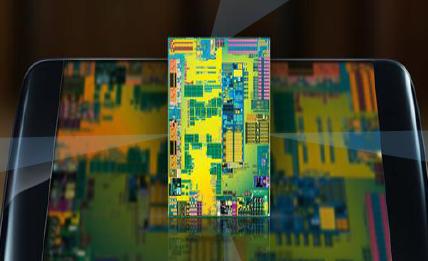Intel’s Oak Trail Processor Wrestles ARM In Tablets

Intel’s Atom Z670 processors are thin and efficient, but most importantly they can run Windows on tablets
Intel has launched its first Atom-based processor specifically designed for tablets, code-named Oak Trail, in an attempt to pull back market share from UK-based ARM Holdings in the burgeoning tablet space.
The Atom Z670 (Oak Trail) is a system-on-a-chip platform, like the previously released Moorestown processor, which was designed for smartphones – but which failed to win any designs because it was considered too large and power-hungry.
Power budgets for tablets will be more generous however and, unlike Moorestown, Oak Trail has a PCI bus, enabling it to run Windows 7, as well as the Android, Chrome and MeeGo operating systems.
ARM processors have been shown running Windows, but this is the forthcoming tablet-tuned Windows 8, which will not be released until 2012.
Oak Trail will be officially announced at the Intel Developers Conference in Beijing tonight, but Kevin O’Donovan, Intel’s head of strategic marketing in EMEA, gave journalists in the UK a briefing ahead of the launch.
Small and power-efficient
The single-core Atom Z670 is manufactured using a 45nm process, and supported by an SM35 Express Chipset. Intel claims that it runs at a 3 watt TDP (thermal design point), making it more energy-efficient and increasing the battery life of devices. It also has Intel’s SpeedStep technology built in, which allows the clock speed of the processor to be dynamically changed, minimising power usage.
The processor is 60 percent smaller than previous generations, allowing it to be used in thinner tablet form factors, while still offering enough processing power for running rich media applications. “We’ve taken best of Pine Trail and Moorestown and combined both to improve performance and provide the ability to run Windows 7,” said O’Donovan.
Intel claims there are currently 35 tablet designs in the works to be powered by Oak Trail, and manufacturers such as Lenovo and Fujitsu have already showed off tablets powered by Atom and running Windows 7.
Agressive tablet strategy
 Intel executives have not been shy about expressing their intentions over the past few months. In October 2010, while announcing quarterly financial results, President and CEO Paul Otellini said the company would move aggressively into the tablet space.
Intel executives have not been shy about expressing their intentions over the past few months. In October 2010, while announcing quarterly financial results, President and CEO Paul Otellini said the company would move aggressively into the tablet space.
“We will use all of the assets at our disposal to win this segment,” said Otellini at the time. “We expect to participate fully and broadly in this market.”
However, Intel’s efforts have so far been overshadowed by the dominance of ARM, whose chip designs are used by such vendors as Qualcomm, Samsung and Texas Instruments, and are found in most of the smartphones on the market today.
Analyst Jack Gold of J. Gold Associates warns that, in order to make an impression on this market, Intel will have to prove that Atom’s single-core graphics performance is on a par with multi-core GPU implementations from the likes of Nvidia and Qualcomm.
“Intel will need to compete in the core wars, more for prestige and less for performance in my opinion,” said Gold, explaining that while Atom may be able to do more per core than ARM, because it supports multi-threading, customers won’t understand this and so will demand the same numbers of cores.
Intel is also announcing the arrival of Cedar Trail, the successor to the dual-core Pine Trail platform, used primarily in netbooks. Intel said Cedar Trail is built on a 32nm process, and offers an improvement in performance of between 30 and 50 percent.